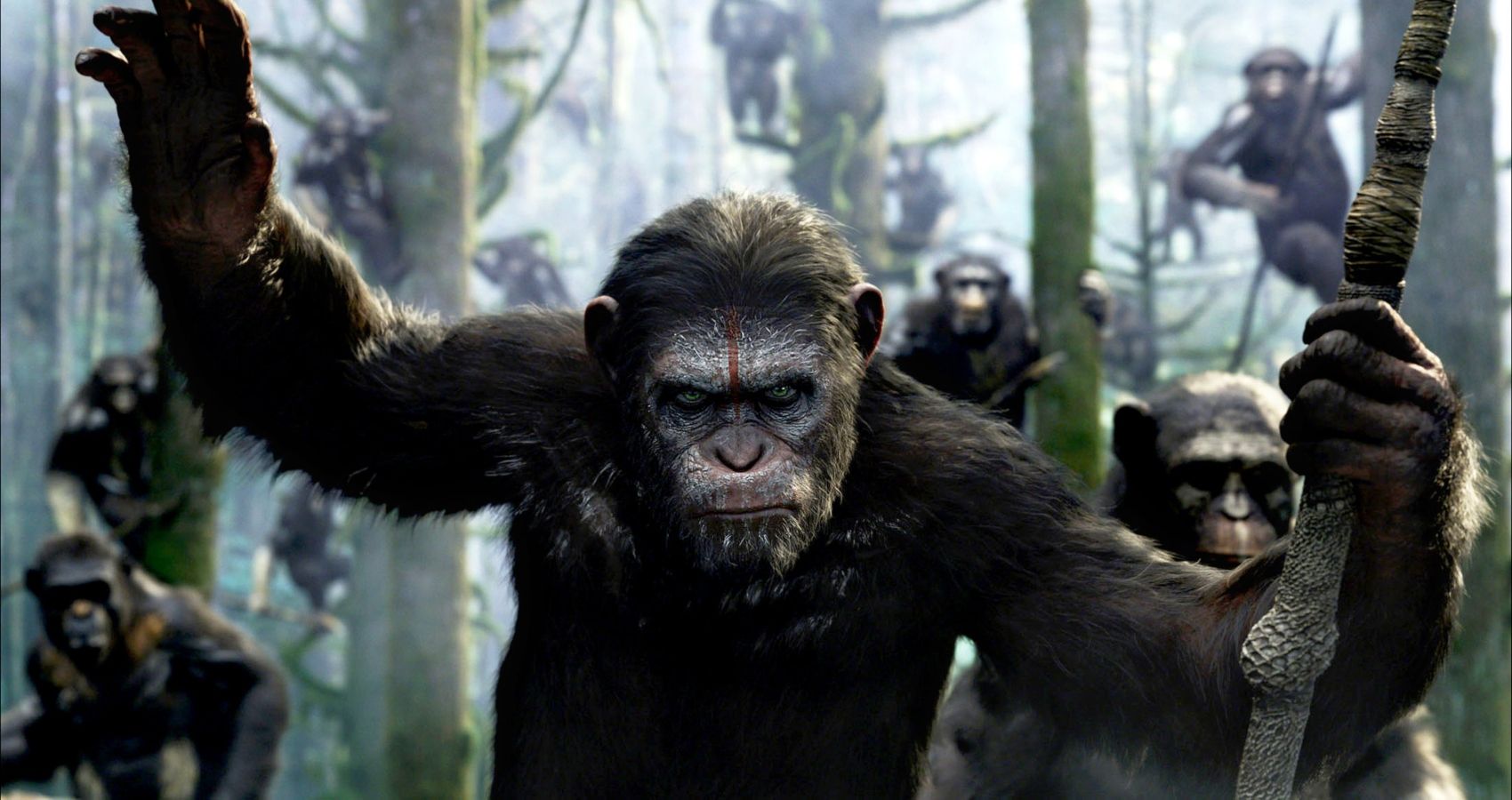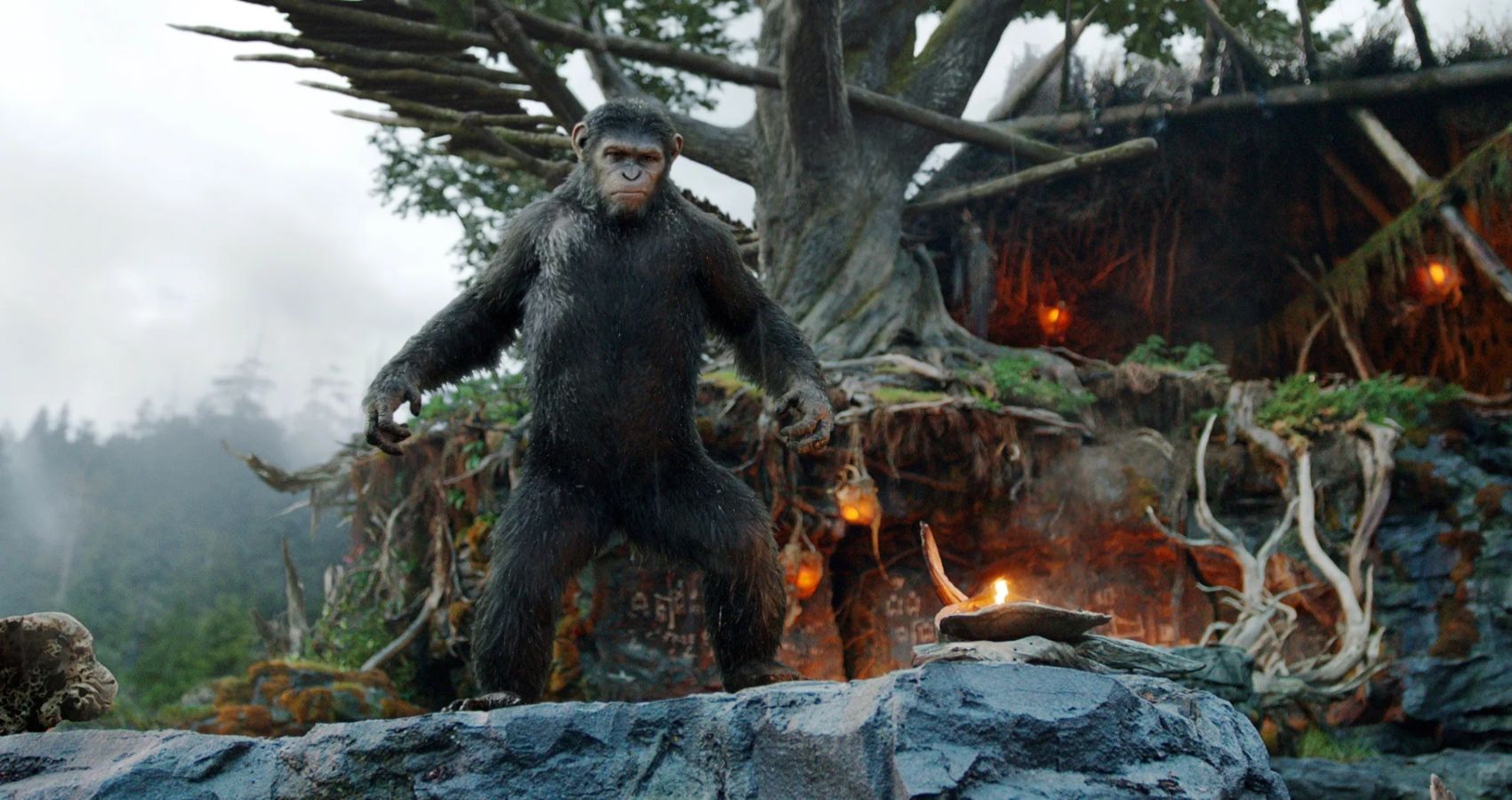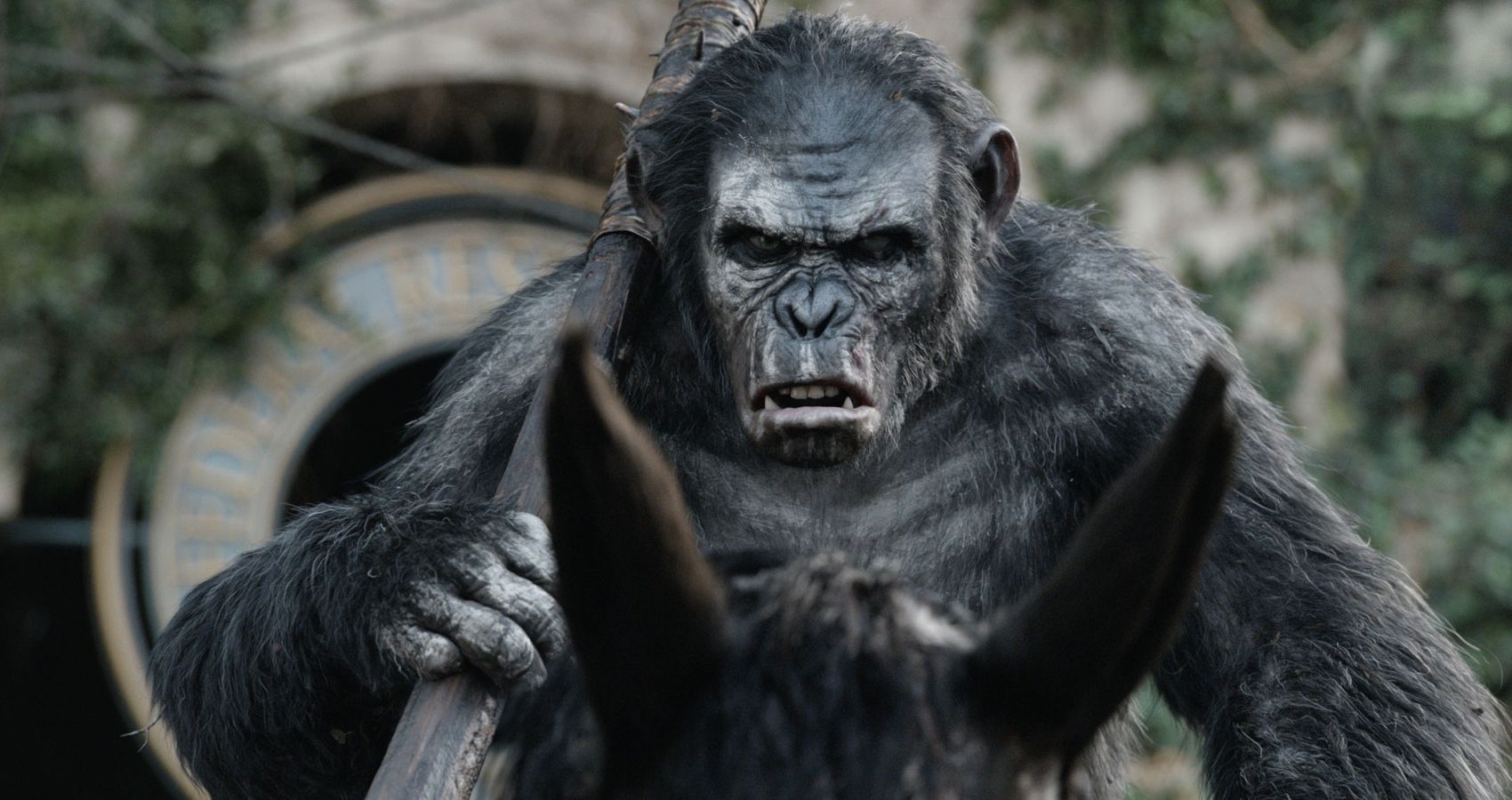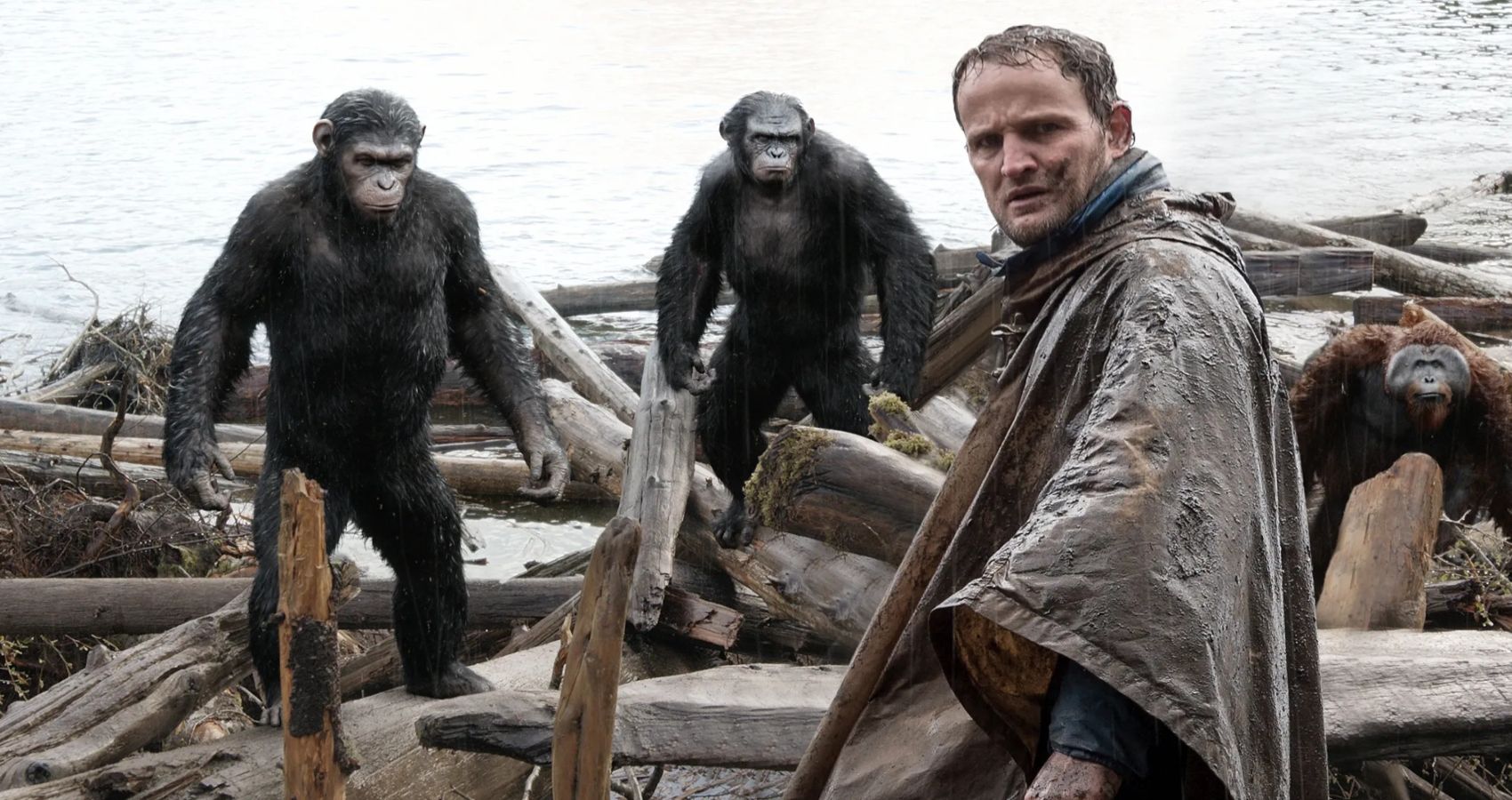Planet of the Apes is one of the oldest major franchises in Hollywood. Since the release of the first movie in 1968, there have been eight more films to come from the brand, in addition to several television series. While some entries have certainly been better than others, The Planet of the Apes has consistently proven itself as one of the most groundbreaking and thought-provoking film series in the history of Hollywood. With the recent announcement that the newest addition to the series, Kingdom of the Planet of the Apes, will be released in 2024, it’s worth revisiting some high points of the franchise to start getting excited.
Far and away, one of the highest points of the entire series is 2014’s Dawn of the Planet of the Apes. It is the second film in the rebooted Planet of the Apes trilogy of the 2010s, following 2011’s Rise of the Planet of the Apes and followed by 2017’s War for the Planet of the Apes. It continues the story of Caesar, an immensely intelligent ape who escaped captivity with a number of others at the end of the first film. Dawn is set 10 years after the end of Rise, and it shows how the group of apes has grown into a small society while humanity’s grip on the earth has started to wither away.
Dawn of the Planet of the Apes is a prime example of franchise filmmaking going above and beyond to deliver a cinematic experience unlike any other. It’s not an overly expensive cash grab that is just trying to capitalize on a recognizable name. It has a genuinely great story to tell, with heavy themes of war, bitterness and what it means to be human. It is wonderfully directed and brought to life by Matt Reeves, and it features numerous career-best performances, particularly that of the legendary Andy Serkis in the role of Caesar. That’s not even to mention the outstanding visual effects work from Weta Digital and the immensely powerful musical score from Michael Giacchino. It’s certainly the best film in the franchise since the original, and one could even argue that it surpasses the 1968 film in some ways.
The Rise of a New Civilization
Dawn of the Planet of the Apes fulfills the promise of the rebooted trilogy by directly showcasing and establishing how exactly the apes overtook humanity as the dominant species on Earth. The film depicts that transitionary point in time and all of the turmoil and strife that came with it. The ape civilization is still in its early days, but in the ten years since the events of Rise, humanity has largely been wiped out by an international pandemic. The Simian Flu, which was seen infecting a few people at the end of Rise, spread like wildfire. Very few people in the world had a natural immunity to the disease, which meant that the human population of the world had decreased dramatically but wasn’t wiped out entirely.
The apes, on the other hand, had previously been given enhanced intelligence through the same chemical agent that caused the pandemic. While the human world essentially descended into a post-apocalyptic nightmare, the apes stayed within the borders of their land deep in the Redwood Forests of California. They knew very little, if anything at all, about what was going on around the world. They were solely focused on their own budding civilization and could not care less about the goings-on of humanity. While the society of man was crumbling, the apes were busy building their own. They taught their children how to speak, read and write; they installed Caesar as the chief of their tribe; and they hunted for food. They were continuing to grow in intelligence and population, and they lived happily for the first decade of their society's existence.
The conflict of the film arrives when the apes are confronted with the surviving human population of nearby San Francisco. A small expedition of people travels out of the city and into the woods with the intent of restoring a generator that would provide the city with power. The group unwittingly travels into the territory of the apes, resulting in both civilizations being suddenly made aware of one another and thrust into a conflict seeded by distrust and the desire to protect their own people. On one hand, the humans are trying to protect what little fragment of society and control they have left, and they view the apes as a threat that would finalize the extinction of humanity. The apes, on the other hand, remember how cruelly some of the humans had treated them before. Caesar only wants to protect the newborn society of the apes from the dangers of humanity. It is within this balance between the two civilizations that Dawn of the Planet of the Apes really challenges its viewer.
Different Perspectives of War
Dawn of the Planet of the Apes depicts the conflict and complexities of both civilizations. Instead of making either the human or the ape society the clear protagonist of the story, the film thoroughly depicts the good and bad of both of them. While the A-storyline is focused entirely on the apes and the inner turmoil growing amongst them, the B-storyline focuses on the humans and how they are desperately grasping for anything that can keep their species alive. The tensions continue to rise between the two neighboring societies, and war grows more and more likely. However, the primary characters in both stories are those that are doing everything they can to prevent the oncoming conflict.
Caesar, as the leader of the apes, has the most sway over the civilization. He is distrusting of the humans at first, as he has seen the horrors of their past first-hand, and he does not want to expose his people to that. However, he remembers the good of humanity, too, as he recalls the kindness of his human father figure, Dr. Will Rodman (James Franco in the previous film). Caesar apprehensively agrees to help the humans restore the generator, but many within the ranks of the apes, chiefly Caesar’s confidante Koba (Toby Kebbell), strongly oppose the decision. As the film continues, Koba and these other apes, who would rather wipe out the remaining humans, grow increasingly resistant to Caesar’s actions. Eventually, Koba attempts to assassinate Caesar, blames it on the humans, and then uses that as the spark that ignites the war.
On the human side of things, the central character is Malcolm (played by Jason Clarke). Along with Dreyfus (Gary Oldman), he is a leader of the remaining human sect in San Francisco. The story of these two men mirrors that of Caesar and Koba, with Dreyfus preferring war with the apes while Malcolm attempts to secure peace between them. Both men lost their families to the Simian Flu, and while Dreyfus blames the apes for that, Malcolm understands the reality that it was humanity that engineered the disease in the first place. From the perspective of the apes, Malcolm is the hope that Caesar sees in humanity, and Dreyfus is the horror that Koba remembers. The same is true from the other side. Malcolm recognizes that Caesar is trying to do what’s best for his people and family, while Dreyfus is enraged by and feeds into the warmongering actions of Koba.
What it Means to be Human
It is through this conflict, and the depiction of the two sides of this brewing war, that the nuance and brilliance of Dawn of the Planet of the Apes can be found. Thematically, it’s an exploration of what it truly means to be human. The film asks its audience to consider if humanity is really just the specific species that we are or if humanity is the ability to empathize with and consider the realities and perspectives of other intelligent people. Through its depiction of Caesar, Malcolm, Koba, and Dreyfus, the film strongly makes the argument for the latter.
Dawn shows that there is humanity and animalistic tendencies within both civilizations. The humanity in the film is embodied by Caesar and Malcolm and their willingness to work together to overcome their issues. They are chiefly concerned with the safety of their families, their people, and the protection of their species. However, they understand that the protection of their own does not need to come from the destruction of others. They recognize the similar desires shared between one another, and they even dare to hope that perhaps the people of San Francisco and the ape civilization could learn to live together peacefully. However, their hopes for a peaceful resolution are dashed by the animosity of Koba and Dreyfus.
Koba and Dreyfus are bitter and resentful characters. They blame the other species for the tragedy of their lives, and as such, they only have room in their hearts for hate. For Koba, this hatred of humans even leads him to turn against his own. He attempts to murder Caesar, then leads the apes in an all-out assault upon the people of San Francisco. The apes easily overrun the city, and Koba becomes its defacto ruler. When a few other apes attempt to follow Caesar’s teachings of understanding, Koba murders some of them outright, and jails the others for disloyalty.
On the whole, it would seem that the animosity of hate overpowers the optimism of humanity in Dawn of the Planet of the Apes, as Caesar and Malcolm fail to stop war from breaking out. However, Caesar’s defeat of Koba at the end of the film adds a new layer of depth. It shows that although hate and trust may often influence and rule the hearts of many, the hope and desire for good in just a few can still have a tremendous effect. The empathy of Malcolm and his family saved Caesar’s life, and the few apes that remained loyal to him laid the groundwork for Koba’s undoing. It is the strength and determination of humanity, not as a species but as an ethic, that wins out in the end.




